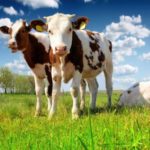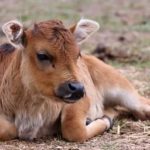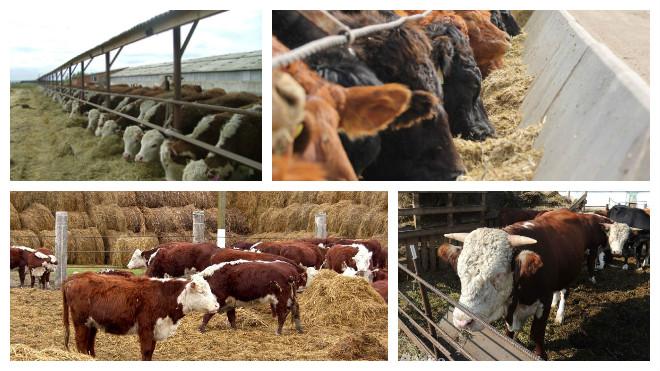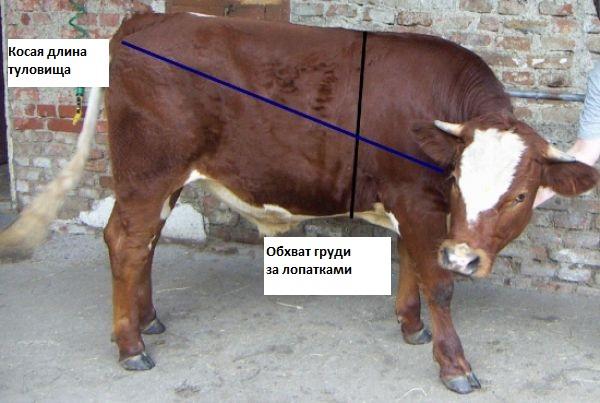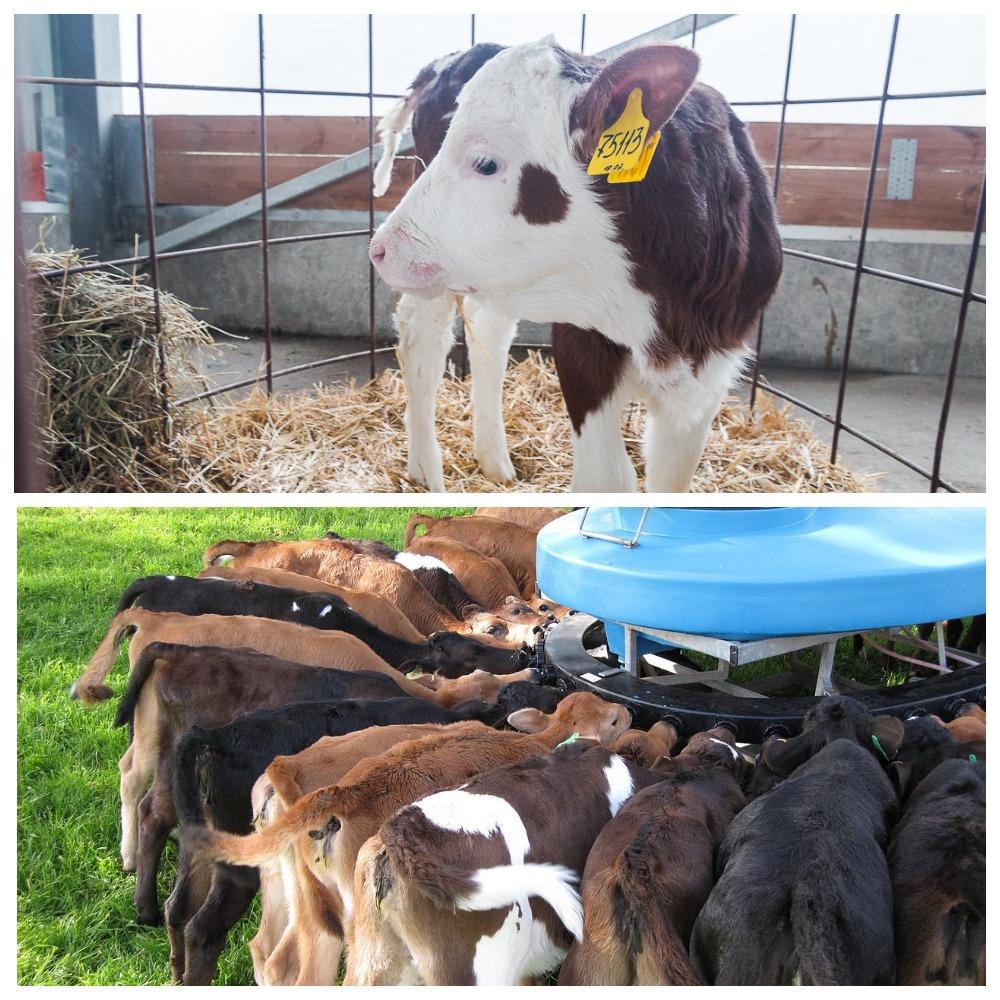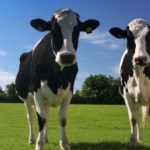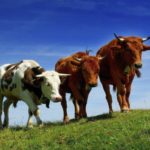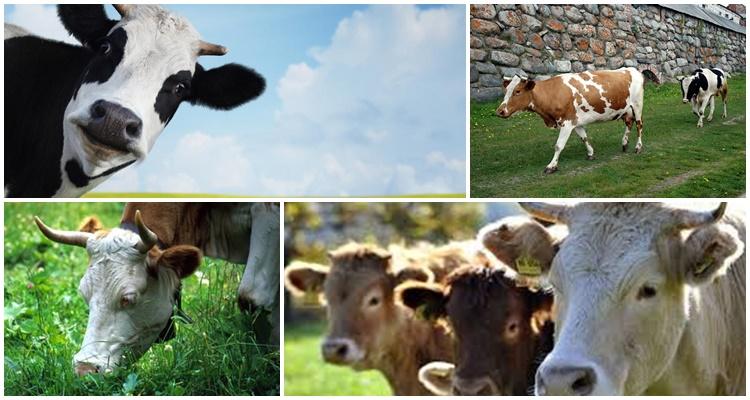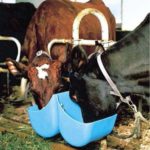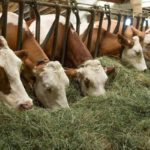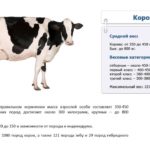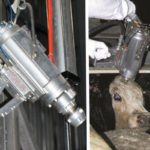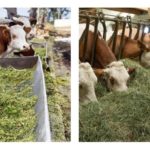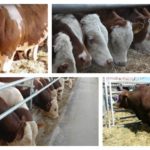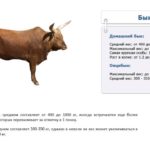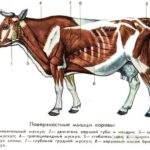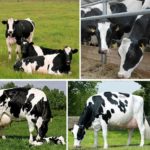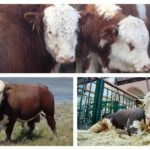Farmers involved in cattle breeding need to know how much calves weigh at a certain period of life. After all, weight gain and how the baby develops directly depend on the quality of nutrition. There are not only average rates of weight gain for calves by month, but also the ability to determine the weight of a bull or cow without a scale. This is necessary when calculating the diet for a herd or purchasing a new animal.
Table of average calf weight by month
The weight of a newborn calf is approximately 10% of the weight of an adult cow, which is 30-40 kilograms. The weight of born calves depends on gender and breed. At birth, a heifer weighs less than a bull, while representatives of the meat sector of animal husbandry are heavier than their dairy counterparts.
| Calf age | Weight | Feed |
| Newborn | 30-40 kilograms | Colostrum, whole milk |
| 1 month | 40-55 kilograms | Whole milk |
| 2 months | 60-80 kilograms | By the end of 2 months, oatmeal jelly, a little selected hay, the basis of nutrition is whole milk. |
| 3 months | 90-110 kilograms | They give less milk, the diet includes hay and root vegetables |
| 4 months | 115-130 kilograms | Hay, root vegetables, silage, bran, dried grass |
| 5 months | 135-170 kilograms | Fresh grass, hay, root vegetables, bran. |
| 6 months | 150-200 kilograms | Food for adult animals |
A bull always eats more and gains weight faster than a heifer.
Factors affecting weight
Several factors are responsible for weight gain in animals. In addition to the health of the livestock, which must be carefully monitored, weight gain depends on:
- genetic characteristics of the organism;
- type of breed;
- motor activity.
Representatives of beef cattle breeds gain weight the fastest. A little slower - meat and dairy animals. Dairy cow breeds the smallest and give less weight gain, but provide the farm with milk. In a private farmstead they usually keep animals of the meat and dairy variety; the weight of the animals is from 450 to 750 kilograms. Up to six months, babies grow rapidly, then growth slows down; by one year, the heifer has 85-90% of the weight of an adult cow.
How to measure indicators
Scales are not used in private households. There are several methods for determining the mass of animals.
Using tape
Exist measuring tapes for cattle. The chest circumference behind the shoulder blades is measured with a tape. The top row of numbers on the tape are centimeters, the bottom row is weight. The tape should fit snugly to the animal's body and should not be pulled too tight. In order for the calf to stand still, it is better to take measurements together: One person measures the animal, the other treats it with something tasty and distracts it.
If you don't have tape, you'll need a tailor's centimeter or tape measure. The calculation is made in different ways.
According to the Trukhanovsky and Kluwer-Strauch method
In the first method, the girth of the calf is measured behind the shoulder blades, the length of the body in a straight line, from the neck to the tail.
The calculation is carried out according to the formula:
M=(AxB)x0.01xK
Where, A is the girth, B is the length of the body, K is the correction. It is 2 for dairy cattle, 2.5 for meat and meat and dairy cattle.
When determining the available weight using the Kluwer-Strauch method, measure the full circumference of the calf’s chest and the oblique length of the body (from the anterior point of the protrusion of the humerus to the posterior ischial tuberosity). The mass of the cow is found in the table at the intersection of the indicators.
| Bust (in cm) |
Oblique length of the body (in centimeters) | ||||||||||||||
| 125 | 130 | 135 | 140 | 145 | 150 | 155 | 160 | 165 | 170 | 175 | 180 | 185 | 190 | 195 | |
| Live weight of cows and bulls (in kilograms) | |||||||||||||||
| 125 | 164 | ||||||||||||||
| 130 | 180 | 187 | |||||||||||||
| 135 | 196 | 203 | 213 | ||||||||||||
| 140 | 216 | 223 | 231 | 241 | |||||||||||
| 145 | 232 | 240 | 250 | 259 | 268 | ||||||||||
| 150 | 247 | 256 | 266 | 277 | 286 | 296 | |||||||||
| 155 | 264 | 274 | 285 | 295 | 306 | 317 | 328 | ||||||||
| 160 | 282 | 290 | 301 | 313 | 324 | 334 | 347 | 356 | |||||||
| 165 | 310 | 323 | 334 | 347 | 358 | 370 | 381 | 394 | |||||||
| 170 | 342 | 355 | 368 | 380 | 393 | 404 | 417 | 431 | |||||||
| 175 | 374 | 390 | 403 | 417 | 429 | 443 | 457 | 470 | |||||||
| 180 | 414 | 428 | 443 | 452 | 471 | 486 | 500 | 515 | |||||||
| 185 | 449 | 464 | 478 | 494 | 508 | 524 | 540 | 552 | |||||||
| 190 | 492 | 506 | 522 | 538 | 555 | 572 | 585 | 602 | |||||||
| 195 | 531 | 549 | 566 | 582 | 600 | 615 | 633 | 648 | |||||||
| 200 | 580 | 597 | 614 | 634 | 649 | 667 | 684 | ||||||||
| 205 | 626 | 644 | 662 | 680 | 699 | 717 | |||||||||
| 210 | 678 | 699 | 716 | 736 | 754 | ||||||||||
| 215 | 734 | 751 | 773 | 792 | |||||||||||
| 220 | 782 | 804 | 825 | ||||||||||||
| 225 | 843 | 863 | |||||||||||||
| 230 | 905 | ||||||||||||||
They give approximate values with an error of 5%.
By belly size
To obtain the result, measurements of the abdomen in the most voluminous part and the circumference of the chest behind the shoulder blades are necessary. Weight is calculated using the formula:
(A+B)÷2+50, where A is the abdominal circumference, B is the chest circumference.
The weight of calves up to 3 months is determined every 10 days, then it should be recorded once a month.
Feeding scheme
Intensive feeding of animals, which quickly increases their fatness and weight, is called fattening.It is not recommended to castrate bulls until they are a year old, otherwise they will build muscle mass worse, the meat will be fatty, and they will be underweight by 20-25 kilograms. When fattening animals, the following factors are taken into account:
- age of animals;
- breed;
- condition before fattening;
- farm conditions;
- floor.
Steers and heifers are sent for fattening; costs for heifers are higher, and the slaughter yield is lower than for bulls. Animals are fed 3-4 times a day. Fattening of animals begins from the moment the calf stops receiving milk and skimmed milk and gets used to adult food.
The first stage of fattening is a period of weight gain up to 400 kilograms, the second - up to a weight of 600-650 kilograms.
When fattening, 3 types of feed are introduced into the animal diet, providing the greatest weight gain:
- The basis is the basic feed, which accounts for most of the volume. Corn silage is considered the best.
- Concentrate. Contains necessary additives, accelerates muscle building. Animals are given 3 kilograms of dry food per day.
- Minerals. Supplements improve appetite and compensate for the lack of nutrients and vitamins. Premixes containing ready-made complexes of vitamins and minerals are often used.
The livestock must have free access to water. This diet is typical for fast or intensive fattening. The stall feeding method is suitable for animals of any age. With this type of fattening, industrial waste is often used, the diet consists of:
- from stillage and molasses;
- silo;
- pulp;
- root vegetables;
- silo
Stall fattening lasts approximately 3 months and contains 3 phases:
- Initial, with the highest rates of weight gain - 30 days, when an intensive gain of muscle mass occurs.
- The average, 40 days, when weight gain decreases, fat layers form.
- The final period, when the bulls receive more concentrate, is 20 days.
Animals must be given plenty of hay. If the feed does not contain mineral additives and the animals are not given premixes, chalk, salt, and bone meal are required.
When fattening, high-quality feed is used; the rate of weight gain and the taste of meat depend on it.
Sometimes, during fattening, prebiotics are introduced into the diet of animals to improve digestion and appetite, and biostimulants, which help reduce fattening time and feed costs. These supplements should be given according to the manufacturer's instructions. Adding antibiotics to feed increases the weight of animals, but worsens the quality of the product.
Fattening calves - a profitable, but complex and labor-intensive business. To increase the meat yield, you should purchase purebred animals and take care of high-quality conditions of housing and nutrition from the birth of the babies. When purchasing animals for fattening, you need to pay attention to their fatness, mobility, and the condition of their skin and hooves. It is better to purchase young animals in early spring (March, April); babies born in winter have better immunity and are more resistant to diseases.

